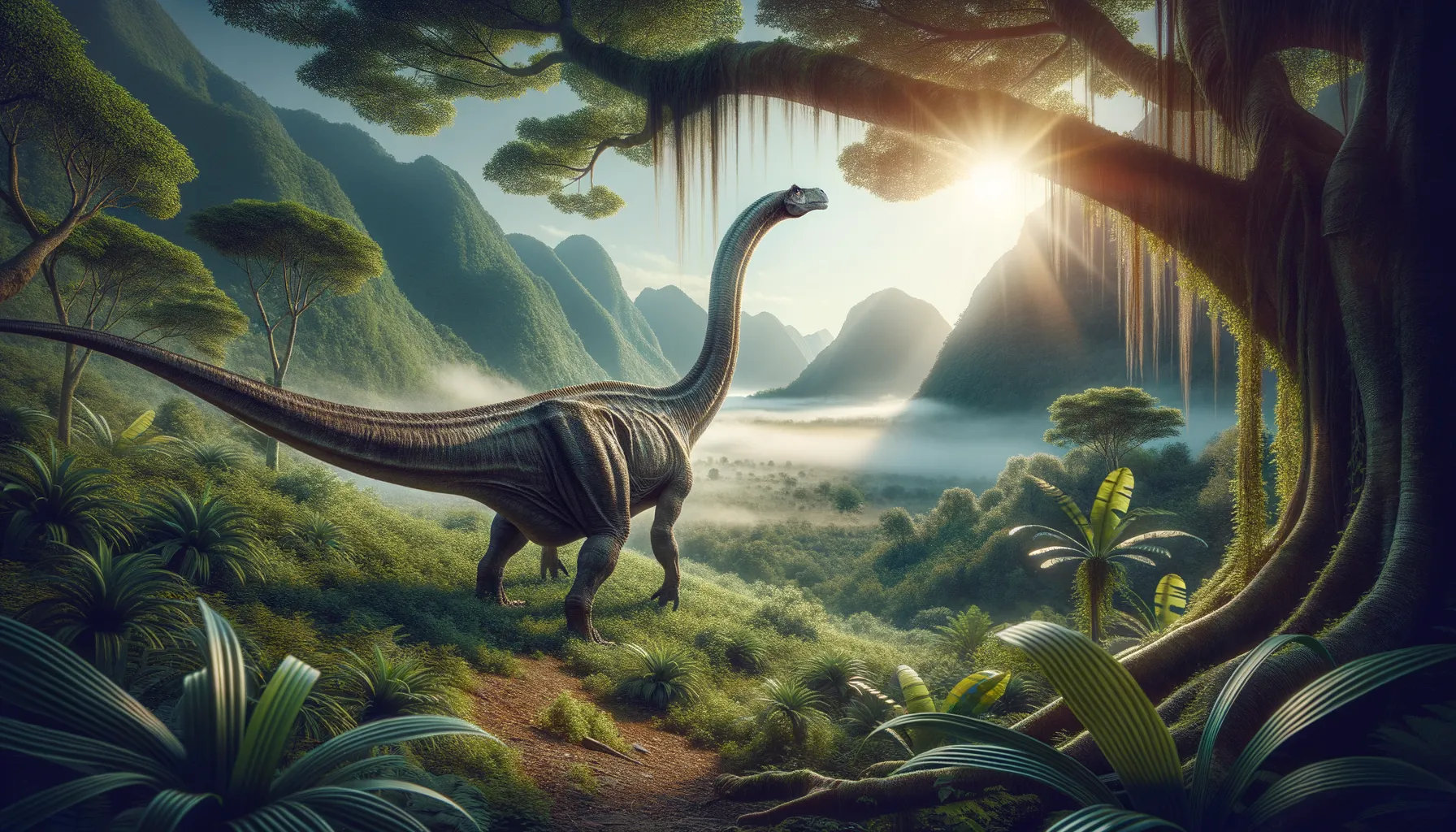
Nebulasaurus
Giant of the Jurassic forests!
Period
Jurassic
Length
Measured around 15 meters in length.
Height
Stood approximately 4 to 5 meters tall.
Weight
Weighed between 15 to 20 tons.
Nebulasaurus was a long-necked dinosaur that roamed the earth during the Middle Jurassic period. Its fossil remains were first discovered in Yunnan Province, China, offering insights into the diverse sauropod fauna of the time. As a member of the sauropod family, it was characterized by its massive body and long neck, which it likely used to reach vegetation in trees, making it a prominent herbivore of its ecosystem.
Diet
Nebulasaurus was a herbivore, primarily feeding on high-vegetation such as conifers and ferns. Its long neck allowed it to reach food that other herbivores of its time couldn't access.
Hunting
Being a herbivore, Nebulasaurus did not engage in hunting. Instead, it spent much of its time foraging for plant material and browsing trees for food.
Environmental challenges
Nebulasaurus faced challenges from climate fluctuations that affected vegetation growth. It also had to navigate through varied Jurassic terrains. Predatory threats, possibly from large theropods, were a constant concern, requiring strategies for defense and survival.
Speed
Likely slow due to its large size.
Lifespan
Estimated at 50-70 years.
First discovery
Found in 2002 in Yunnan Province, China.
Fun Facts
- Nebulasaurus is a sauropod dinosaur known from only a few fossilized bones, making it a bit of a mystery!
- This dinosaur lived during the Middle Jurassic period, about 160 million years ago in what is now China.
- Nebulasaurus was a long-necked herbivore, likely feeding on plants like ferns and other prehistoric vegetation.
- Its name means 'cloud lizard,' inspired by the often misty environment of the fossil sites in the Yunnan Province.
- Despite its great size, the Nebulasaurus was a gentle giant, spending much of its time searching for food.
- The discovery of Nebulasaurus fossils has provided valuable insights into the spread of sauropods in Asia.
- Being relatively new to science, Nebulasaurus continues to surprise researchers as new discoveries are made.
Growth and Development
Nebulasaurus, like many sauropods, experienced rapid growth after hatching. Juveniles were particularly vulnerable, and reaching a large size was key to their survival. Over time, they developed strong, pillar-like legs to support their massive bodies.
Habitat
This dinosaur lived in lush, forested regions with abundant plant life. Its environment was rich in large coniferous forests and fern-covered landscapes, providing ample food resources. Seasonal changes would have influenced the availability of vegetation.
Interaction with other species
Nebulasaurus shared its habitat with other herbivores and potential predators. It may have collaborated with its own kind for protection against predators. Its large size likely made it a formidable presence, deterring some threats.
Natural lifespan
Its natural lifespan could be comparable to modern large mammals.
Reproduction
Nebulasaurus bred through egg-laying, with nesting sites potentially hidden among vegetation. They likely laid multiple eggs, with little parental care after hatching, relying on the sheer number for offspring survival.
Social behaviour
It may have moved in herds for mutual protection, especially juveniles needed the safety of numbers. Social behavior could have included vocal communication to maintain group cohesion.
Fossil locations
The only confirmed fossils of Nebulasaurus have been found in Yunnan Province, China. These discoveries are crucial for understanding Middle Jurassic sauropods. The location offers a unique insight into the diversity of ancient Chinese ecosystems.
